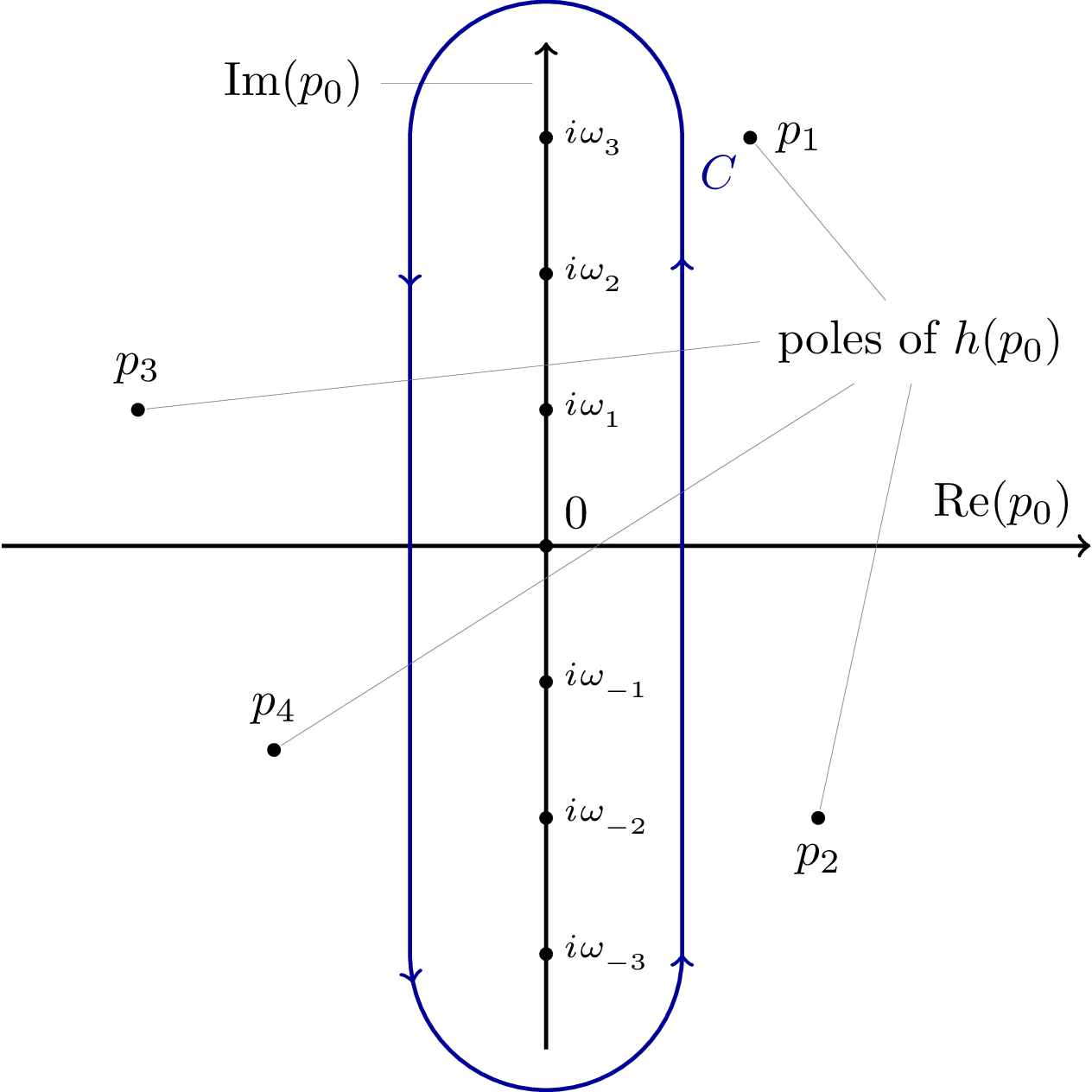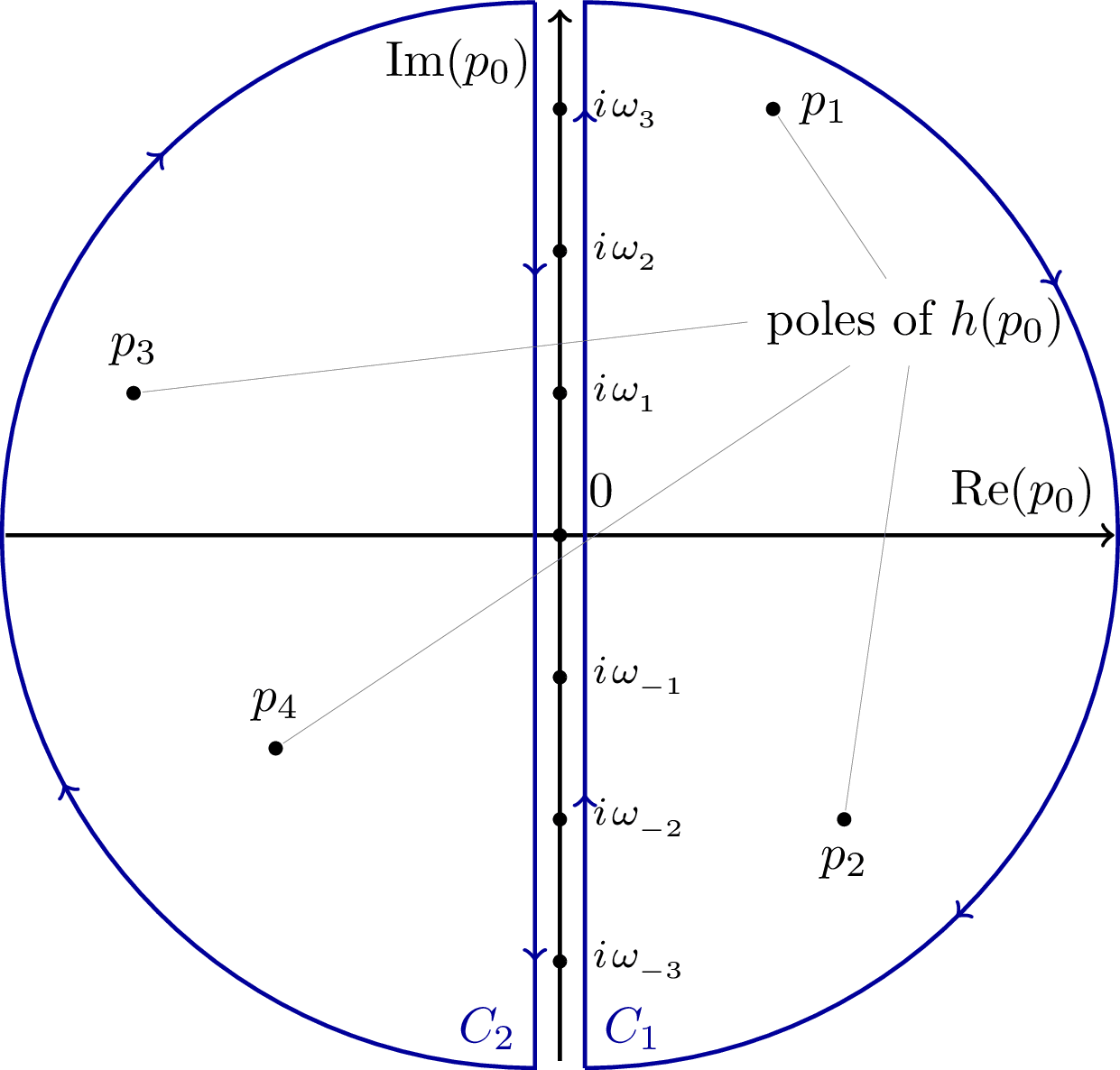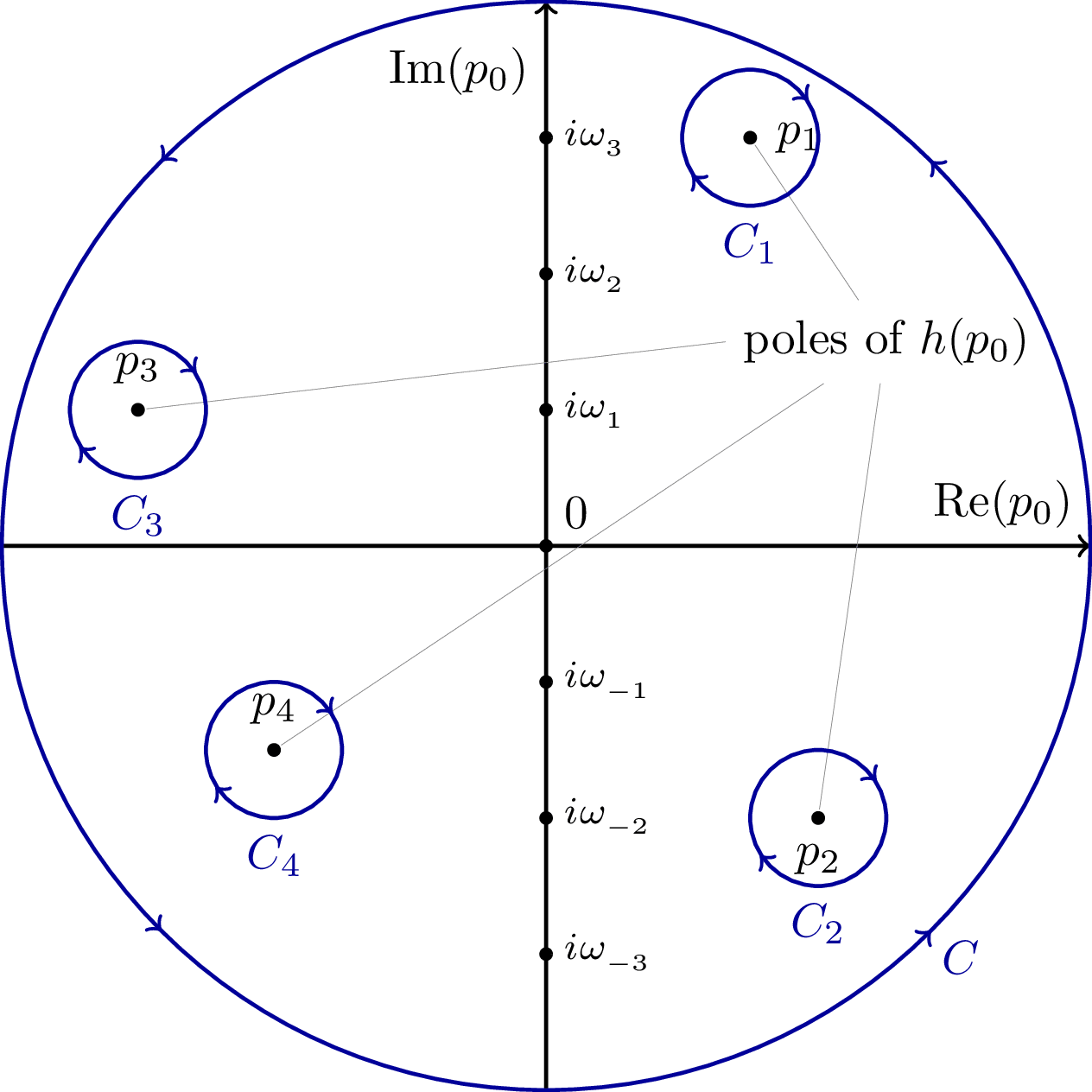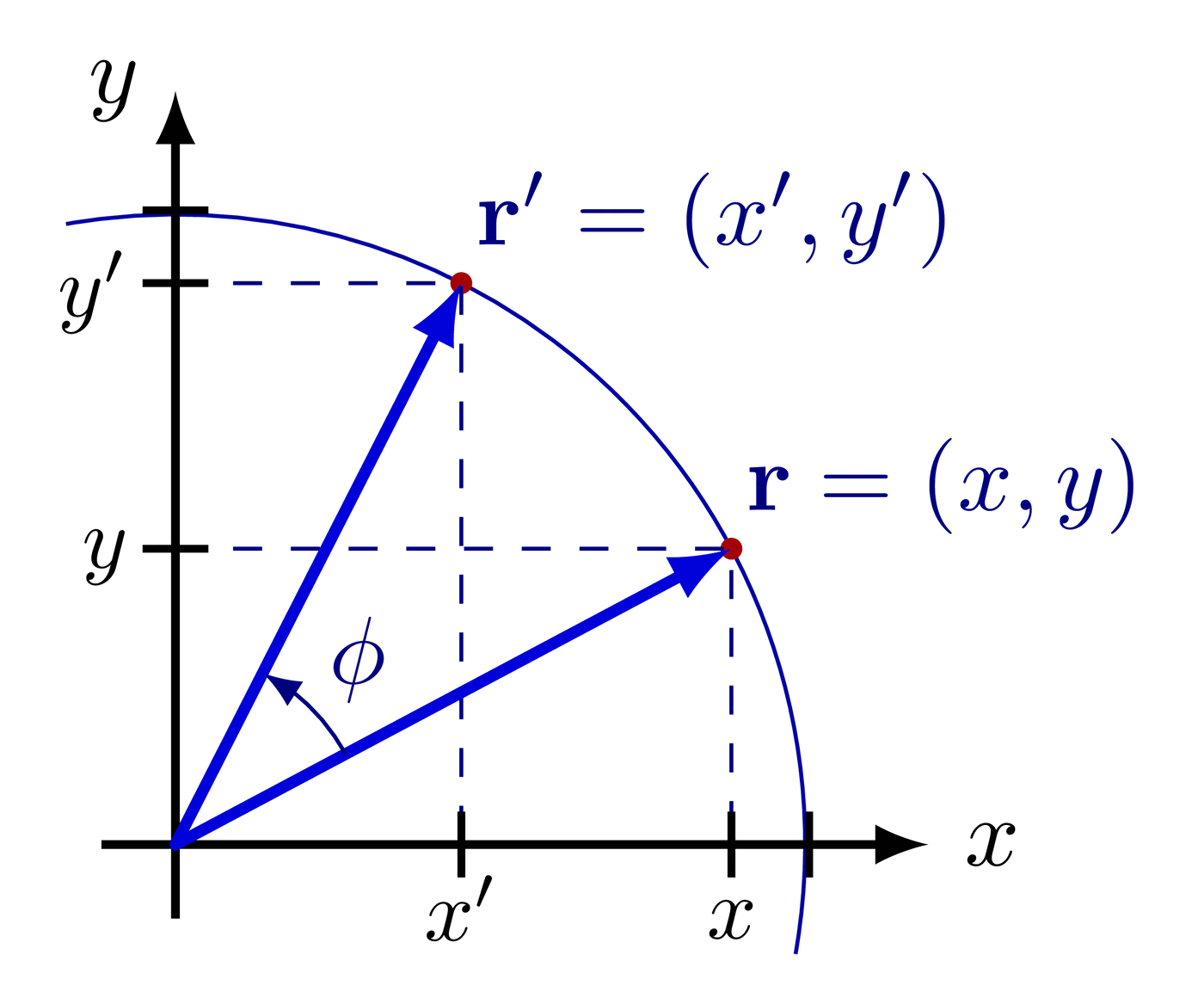Propagator branch cuts, i.e. a continuum of singularities, along the real frequency axis extending from $\pm |\vec p|$ out to $\pm \infty$. Pulled from arxiv:1712.09863.
Edit and compile if you like:
\documentclass[tikz]{standalone}\usetikzlibrary{intersections,decorations.markings}\begin{document}\begin{tikzpicture}\node [style={circle,minimum width=4cm,fill=gray!20},draw=black,name path=A,decoration={markings,mark=at position 0.175 with {\arrow[ultra thick]{>}}},postaction={decorate}] at (0,0) (A) {};\node [style={circle,minimum width=1.2cm},name path=C] at (A.north east) (B) {};\filldraw (A) circle (2pt) node [above right] {0} (B) circle (2pt) node [right]{$w$};\node [above] at (A.north) (annotation) {$z$-contour};\draw [thick] (annotation.west) edge[out=180,in=120,->] ++(-0.4,-0.6);\node [style={circle,minimum width=4cm,fill=gray!20},draw=black,name path=C,decoration={markings,mark=at position 0.175 with {\arrow[ultra thick]{>}}},postaction={decorate}] at (6cm,0) (C) {};\node [style={circle,minimum width=1.2cm},name path=D] at (C.north east) (D) {};\filldraw (C) circle (2pt) node [above right] {0} (D) circle (2pt) node [right]{$w$};\node [above] at (C.north) (annotation) {$z$-contour};\draw [thick] (annotation.west) edge[out=180,in=120,->] ++(-0.4,-0.6);\node [style={circle,minimum width=4cm,fill=gray!20},name path=E] at (12cm,0) (E) {};\node [style={circle,minimum width=1.2cm,fill=gray!20},name path=F,decoration={markings,mark=at position 0.15 with {\arrow[ultra thick]{>}}},postaction={decorate}] at (E.north east) (F) {};\filldraw (E) circle (2pt) node [above right] {0} (F) circle (2pt) node [right]{$w$};% intersection points between circles E and F\path [name intersections={of = E and F}];\coordinate (EF1) at (intersection-1);\coordinate (EF2) at (intersection-2);% calculate angles from center of E/F to intersection points\pgfmathanglebetweenpoints{\pgfpointanchor{E}{center}}{\pgfpointanchor{EF1}{center}}\let\EEFone\pgfmathresult\pgfmathanglebetweenpoints{\pgfpointanchor{E}{center}}{\pgfpointanchor{EF2}{center}}\let\EEFtwo\pgfmathresult\pgfmathanglebetweenpoints{\pgfpointanchor{F}{center}}{\pgfpointanchor{EF1}{center}}\let\FEFone\pgfmathresult\pgfmathanglebetweenpoints{\pgfpointanchor{F}{center}}{\pgfpointanchor{EF2}{center}}\let\FEFtwo\pgfmathresult
Click to download: contour-deformation.tex
Open in Overleaf: contour-deformation.tex
This file is available on tikz.netlify.app and on GitHub and is MIT licensed.
See more on the author page of Janosh Riebesell..








